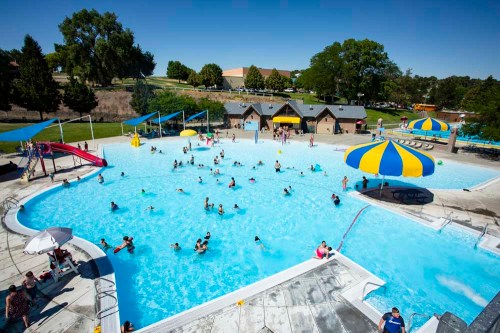Heat wave breaks records
Published 5:00 am Thursday, July 1, 2021

- The city of Pendleton is moving forward with a project to fix a leak at the Pendleton Aquatic Center.
PENDLETON — The word “unprecedented” isn’t thrown around lightly in meteorology, but the heat wave enveloping Eastern Oregon and the rest of the Northwest has no recorded historical precedent.
An extended surge in high temperatures has shattered records across the region, sometimes by as much as 5 degrees. According to the National Weather Service, the Tuesday, June 29, temperatures in Pendleton — 117 degrees — and Hermiston — 118 degrees — are all-time modern highs for the two cities. The normal temperatures for this time of year is in the mid-80s.
“The sheer magnitude of the temperatures is unprecedented,” Cole Evans, a forecaster for the weather service station in Pendleton, said.
Meteorologists often have referred to the heat wave as a “heat dome,” a phenomenon Evans compared to a car parked under the sun for an extended period of time. Evans said a layer of high atmospheric pressure formed over the Northwest, allowing warmer temperatures to build over time until they crested this week.
The heat may have been harsh enough to claim a life. The numbers still are preliminary, but the Oregon State Medical Examiner’s Office reported Wednesday, June 30, one death related to the heat wave in Umatilla County.
Umatilla County was not alone. The Oregon Medical Examiner’s Office also reported preliminary investigations revealed Columbia County had one death due to heat, Clackamas County had two, Washington County had five, Marion County had nine and Multnomah had 45.
While some Northwest communities nearer to the Pacific Ocean already are starting to see significant cooldown, it may take a little longer for Eastern Oregon to break the heat. Although temperatures are expected to retreat from their record-breaking patterns, Evans said the temperature is expected to stay in the triple digits through the Fourth of July weekend as stagnant wind conditions will keep much of the heat in place. The temperature isn’t expected to dip down into the 90s until well into the first full week of July.
Another unusual aspect of the heat wave is how early it came in the summer season. Evans said the region likely will see more standard heat waves in July and August, but they are unlikely to be as severe as their predecessor.
The potential for fire danger prompted the Umatilla National Forest to implement more public use restrictions effective as of 12:01 a.m. July 1.
The U.S. Forest Service in a press release stated the increased restrictions pertain to the use of campfires, smoking, chain saws, internal combustion engines and generators.
Under the stricter rules, campfires only will be allowed in designated campgrounds and recreation sites. Liquefied or bottled gas stoves and heaters are allowed for cooking and heating.
Operating an internal combustion engine, such as a chain saw, requires a valid permit. Generators will only be allowed in the center of an area at least 10 feet in diameter that is cleared of all flammable material; or when contained within a pickup bed that is devoid of all flammable material; or when factory installed in a recreational vehicle and the generator exhaust discharge is in the center of an area at least 10 feet in diameter that is cleared of all flammable material.
Smoking is only allowed within enclosed vehicles, buildings and developed recreation sites or when stopped in an area cleared of all flammable material.
For more information about the Umatilla National Forest’s public use restrictions, contact the Umatilla National Forest Information Hotline at 877-958-9663 or visit it website at www.fs.usda.gov/umatilla.
The Oregon Department of Forestry also could have restrictions in place. For information, contact a local Oregon Department of Forestry office or visit one of the interagency dispatch center’s webpages:
• Blue Mountain Interagency Dispatch webpage: www.bmidc.org.
• John Day Interagency Dispatch webpage: bicc-jdidc.org/index.shtml.
The heat wave still could have long-term consequences for fire season, which was reflected by Gov. Kate Brown declaring a state of emergency over the imminent threat of wildfire.
As temperature records broke across the Northwest, some residents have expressed fear that climate change means the heat wave has established a new normal for summer conditions.
Paul Loikith, the director of the Portland State University Climate Science Lab, told Willamette Week the “heat dome” still is possible regardless of climate change, but global warming played a factor in making the heat wave more intense than it usually would be.






